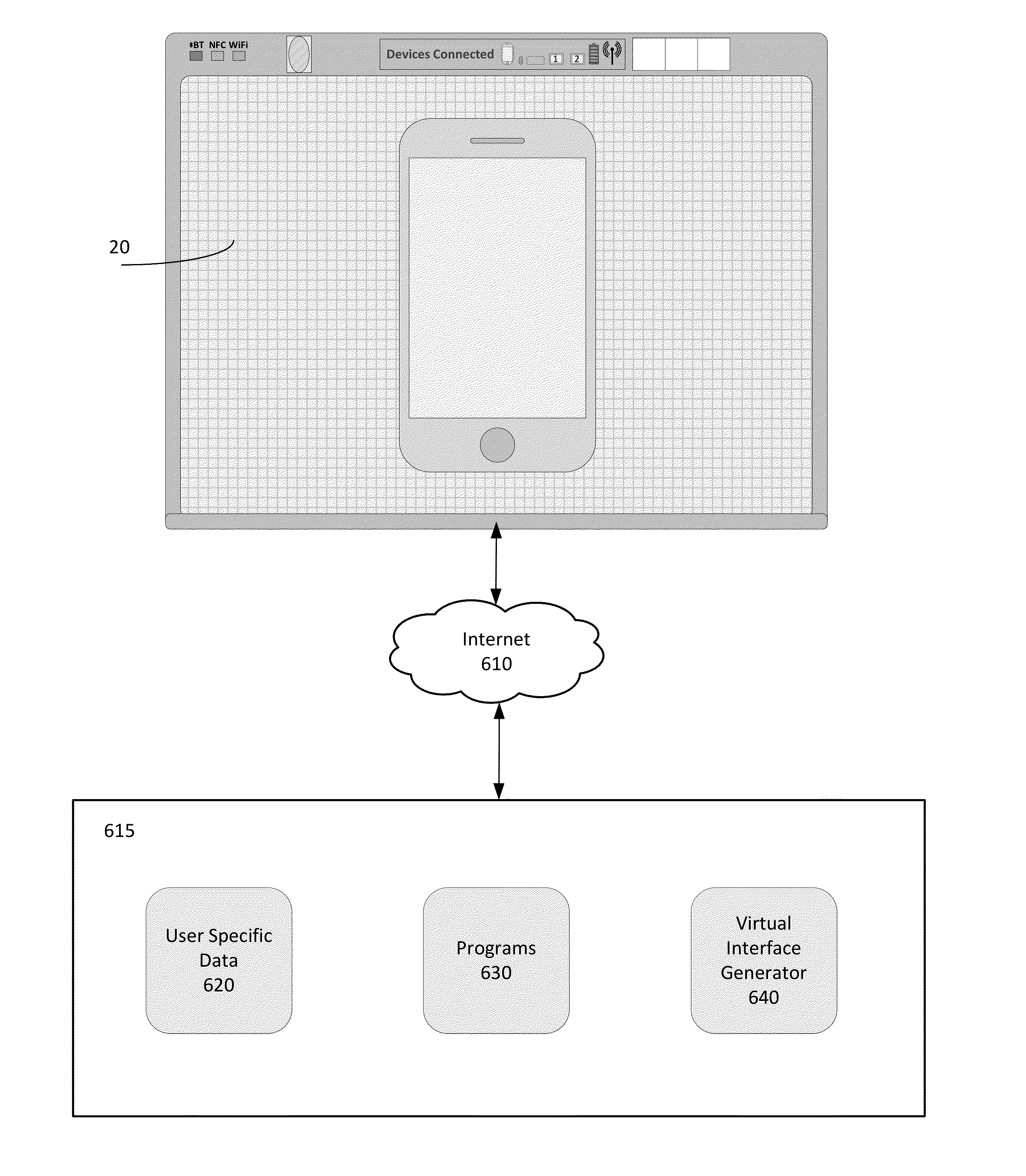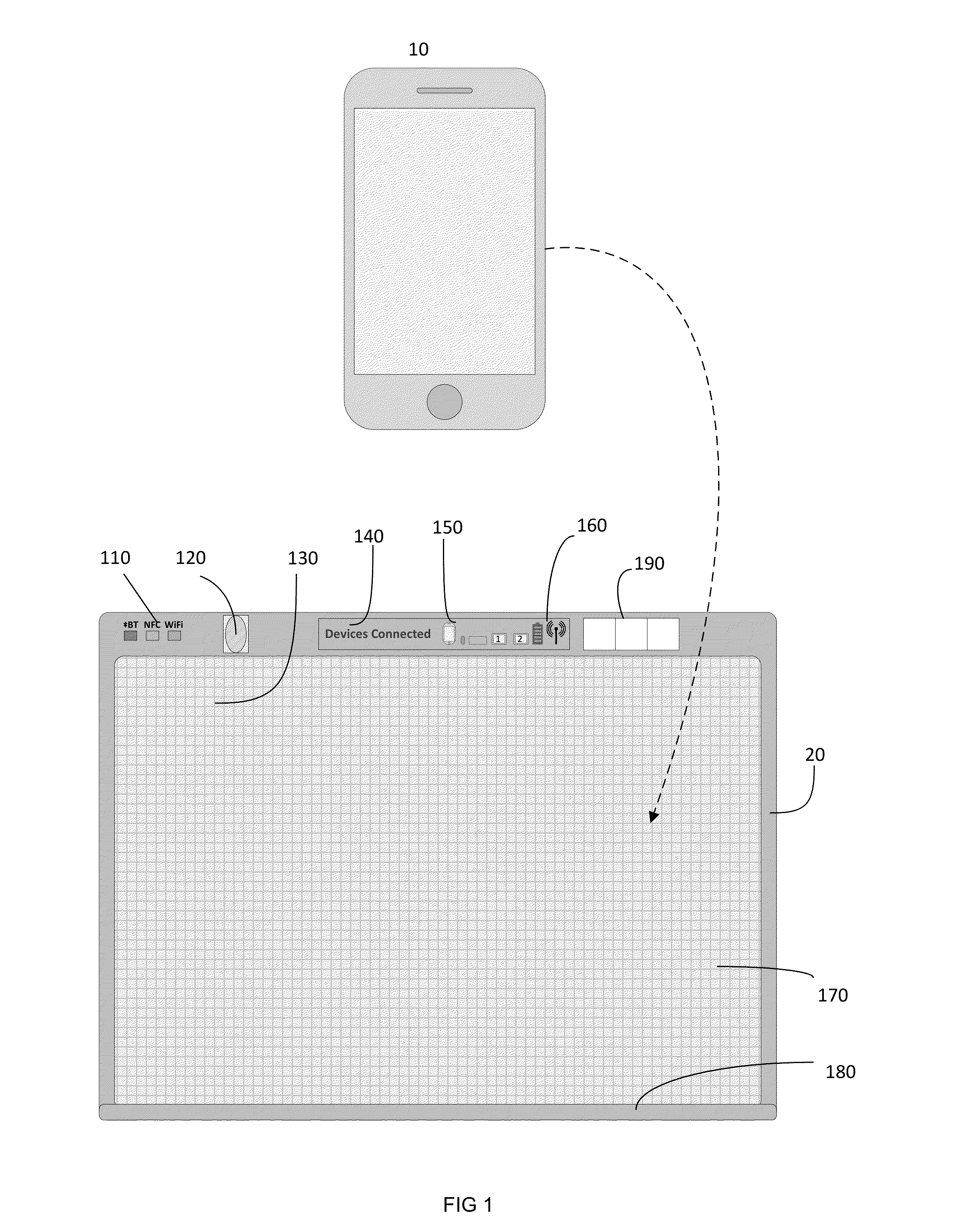System and Method for Mobile Device Docking Station
a mobile device and docking station technology, applied in the field of systems and methods for docking stations, can solve the problems of limiting the usefulness affecting the use of the docking station, so as to facilitate the connection of peripheral devices, facilitate the connection of mobile devices, and facilitate the wireless connection
- Summary
- Abstract
- Description
- Claims
- Application Information
AI Technical Summary
Benefits of technology
Problems solved by technology
Method used
Image
Examples
Embodiment Construction
[0027]Embodiments of the present invention are directed to a method and system for charging a mobile device, connecting the mobile device to peripheral devices and connections, and providing access for the mobile device to a virtual environment hosted by a remote computer. The system reduces the need for standalone desktop computers and facilitates the use of mobile devices for everyday computing tasks.
[0028]FIG. 1 is a schematic diagram of a docking station 20 according to an embodiment of the present invention. Mobile device 10 is a mobile computer. Such mobile computers include, for example, smartphones, tablets, laptops, PDAs, ultrabooks, netbooks, as well as other portable computing devices. The mobile device 10 may support 3G and 4G cellular radio connections, Wi-Fi, Bluetooth, GPS, near field communication (“NFC”), and compact digital cameras.
[0029]The docking station 20 has a housing that comprises an inductive surface 130, connection status indicator 110, a biometric sensor...
PUM
 Login to View More
Login to View More Abstract
Description
Claims
Application Information
 Login to View More
Login to View More - R&D
- Intellectual Property
- Life Sciences
- Materials
- Tech Scout
- Unparalleled Data Quality
- Higher Quality Content
- 60% Fewer Hallucinations
Browse by: Latest US Patents, China's latest patents, Technical Efficacy Thesaurus, Application Domain, Technology Topic, Popular Technical Reports.
© 2025 PatSnap. All rights reserved.Legal|Privacy policy|Modern Slavery Act Transparency Statement|Sitemap|About US| Contact US: help@patsnap.com



